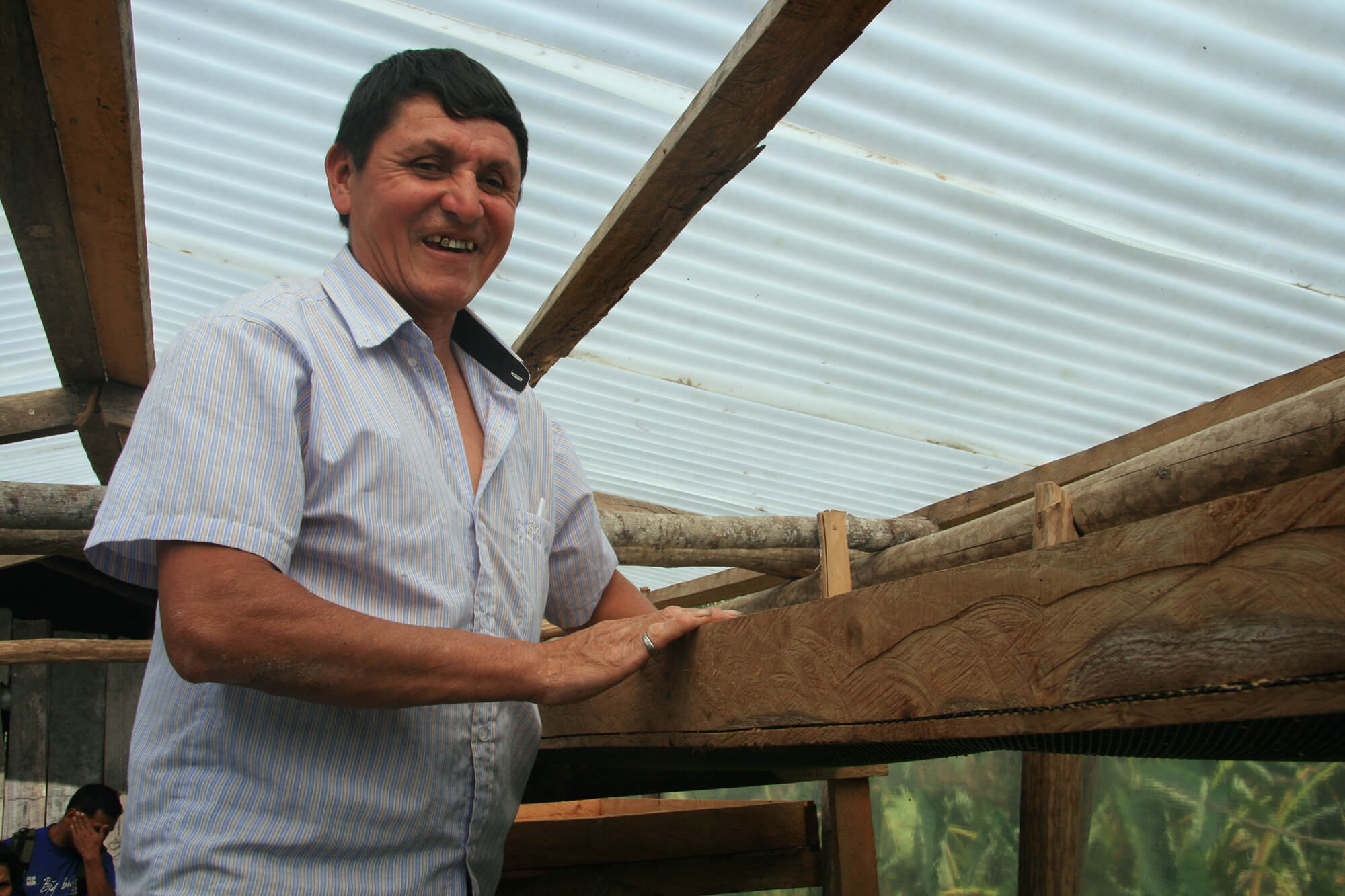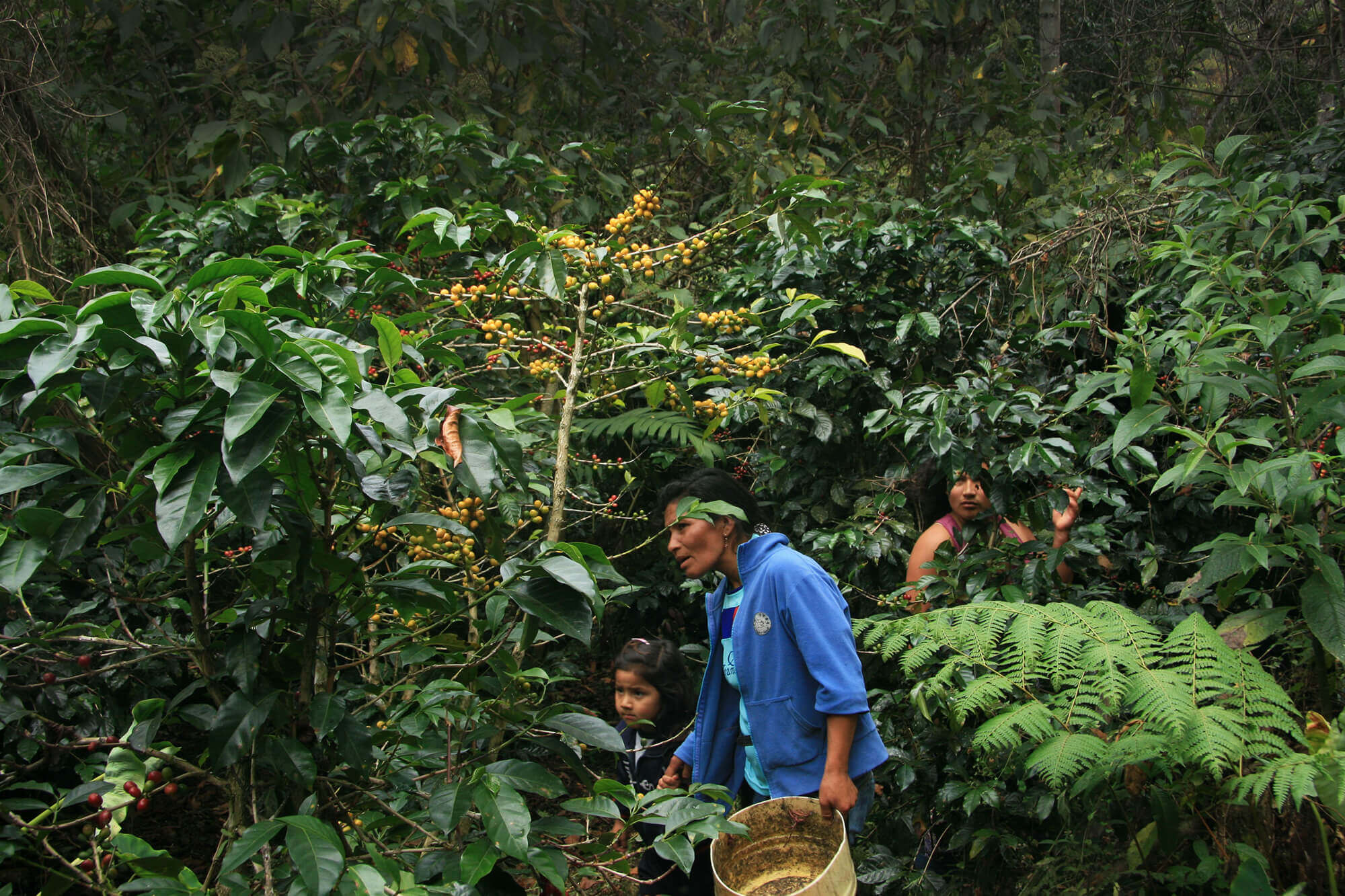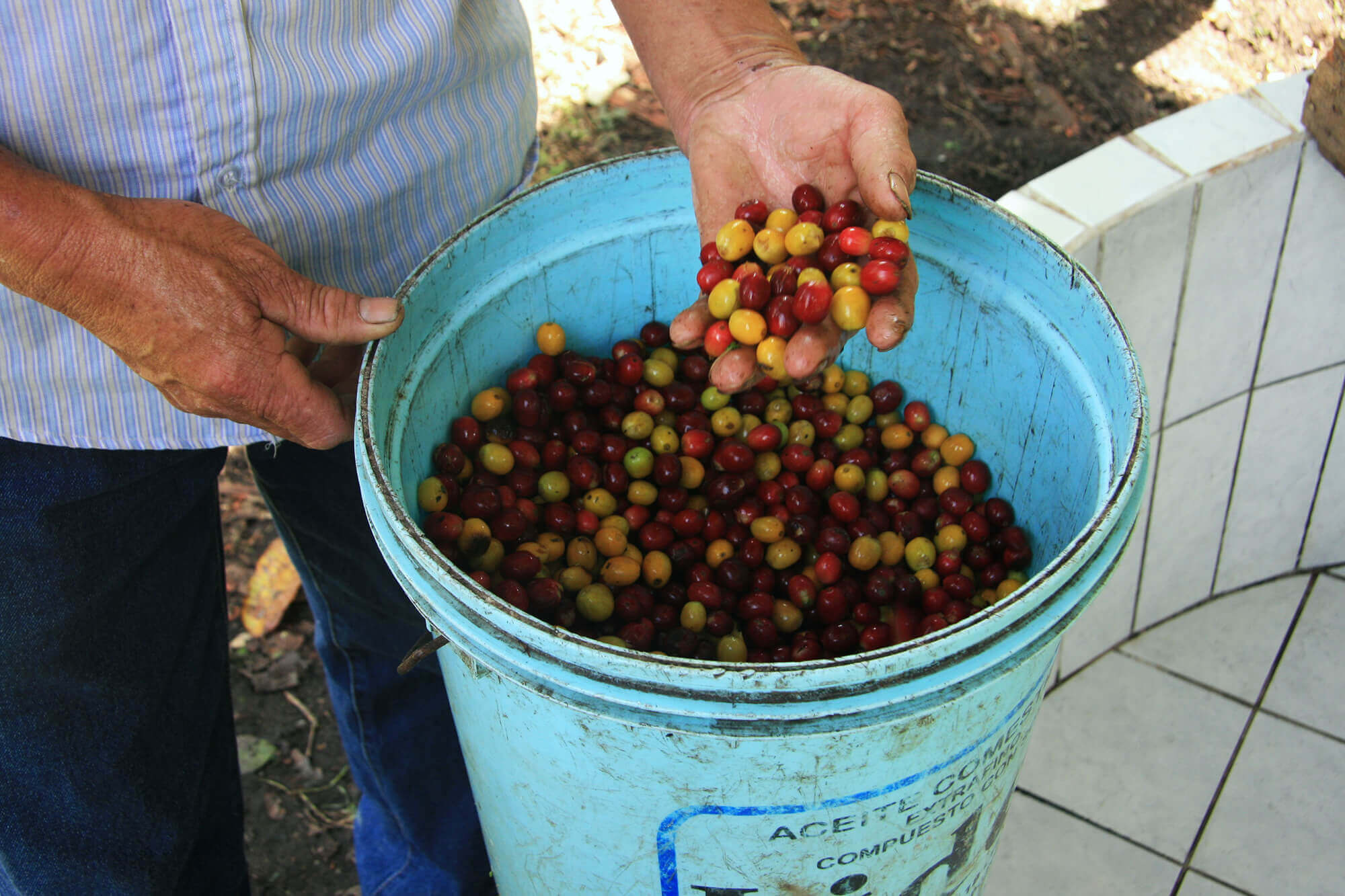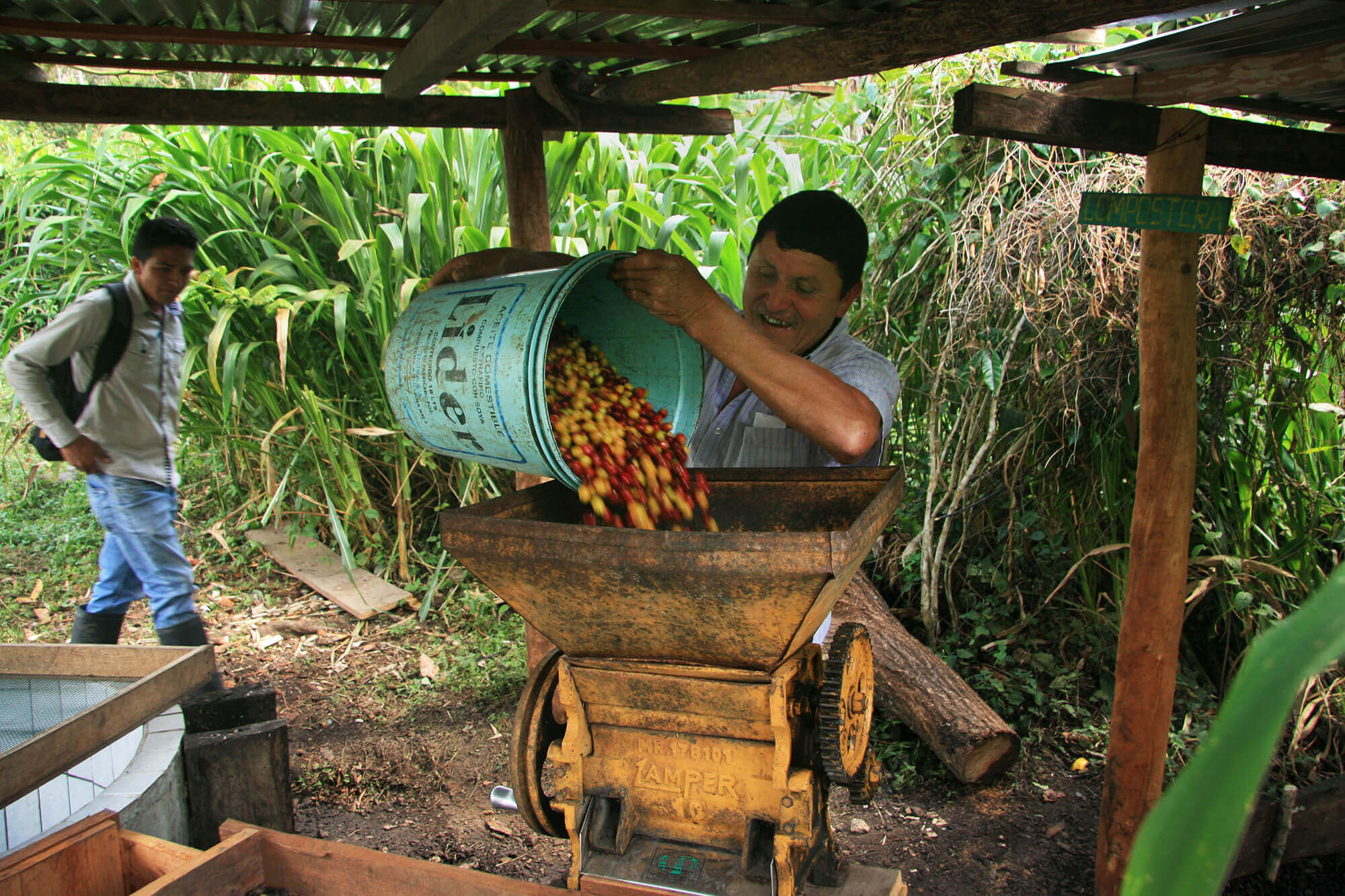In our previous series, Paying for Coffee: It’s Complicated, we talked about the various factors that underpin how we as a sourcing company buy coffee, as well as how to discuss it. While that series looked at the larger picture and laid groundwork for discussion, this is something we feel we—and the industry at large—need to go deeper on. This series will take a closer look at the details that underpin how we buy coffee in our major supply chains, each of which is unique.
Coopbam and Red Fox
Within the Alto Mayo protected forest lies Coopbam, the association that drew us into Northern Peru after years of exclusive work in the South. Alto Mayo, which spans the border between the San Martin and Amazonas departments of Northern Peru, is home to a huge cross-section of native Peruvian wildlife.
Created by Conservation International, Coopbam acts as a steward of this forest, producing unique, excellent coffees while focusing heavily on fighting deforestation, protecting the native forest, and promoting socioeconomic development. Since coffee is still a major driver of deforestation, the project helps coffee producers in the protected area grow coffee in ways that preserve native trees, soil, and ecosystems.
Coopbam has been a major catalyst for change in our work in Peru. Prior to meeting Coopbam, we had worked only in Southern Peru, focusing our energy on inaccessible regions like Cusco and Puno where market access lagged far behind quality. Even though Northern Peru was home to some excellent coffee, the terrain was more accessible than the South and had better market access, so it was harder for us to see what value we could add to the supply chains there.
That changed when we met Coopbam, a group focused on environmental conservation and community uplift that needed a dedicated buyer to get off the ground. Because Coopbam is so different than the groups we work with in the South, it’s a perfect vantage point to look both at what we pay for coffee there, and the deeper issues of how we buy and what value we as a sourcing company are able to add for this group.

How We Got Involved
Conservation International organized Coopbam in 2014 as part of the Alto Mayo Conservation Initiative; a year later, a friend got in touch with us to tell us that Conservation International was looking for a buyer interested in taking on and investing in the project. They put us in touch with Coopbam and we started what would turn out to be a very meaningful relationship.
In our first year, we bought 30-40 bags of solid coffee, nothing mind-bending, but we came back, excited for a second year. As Conservation International employee and Coopbam leader Hugo Cahuapaza connected with more growers on the Amazonas side, the coffees got better and better. This area has a very special climate, with crisp cold nights and temperate days that are ideal for coffee production, as well as an abundance of old Typica, Caturra, and Bourbon, working together to produce a beautiful cup. Over time, our volume increased from that 30-40 bags to around 2.5-3 containers this year. While the quality is strong, we value Coopbam not just because of the cup they produce but the way they produce it: as a true community organization devoted to support and conservation of the local ecosystem and the humans within it.
Since its founding, Coopbam helped create a lot of job opportunities, not just through coffee production but also through reforestation programs. Coopbam has also created 4 women’s committees to represent women’s equity on a local level, targeting access to education and healthcare. They delivered cooking stoves to their member households, launched medical campaigns and installed solar panels. They produce delicious coffee, but that’s far from the limit to their work.
What We Pay
The actual prices we pay at the FOB and farmgate level are in a way the simplest and least interesting part of the supply chain, but we want to share them, as well as laying out the actual process by which people get paid—a variable that can have a huge effect on the lives of producers. Please note that the unit in the below chart jumps from quintals to pound when moving from farmgate prices to FOB.
[table id=9 /]
Coopbam pays members at two points. When the coffee is delivered, they do a physical evaluation to determine the estimated yield. Producers receive an advance based on this estimate (as seen above). Coopbam pays producers again at the end of the season (sometime between December and February, depending on when the coop receives payment from all of its clients).
This second payment is based on the price paid by the buyer as well as the other premiums noted above (Fair Trade and Prima Asamblea—both of which the coop designates into separate communal funds for workers and producers in order to be used to improve the social, economic and environmental conditions of the community and cover certain operating costs). The second payment can be up to $80 USD. Red Fox pays the coop the above FOB rates once we receive the export documents.
As discussed in prior Paying for Coffee pieces, the core of our sourcing strategy is setting clear, consistent standards for quality and pricing. Prices are a) never, ever connected to the C market price in any way, and b) they are the absolute highest in the region in order to incentivize both quality production and sale to Red Fox over another potential buyer.
Also important to note is that we aren’t just offering high quality premiums: since most groups produce more 84/85 point coffees than higher-scoring lots, our base rate comprises the majority of what we end up buying, meaning that paying the highest base rate is critical to an honest approach. It should go without saying, but we also stand by the benchmarks we set and never renege on the quality tier and pricing we commit to, regardless of what happens to the coffee on the sales or quality side after import.
Ex-Warehouse Pricing
As discussed in prior Paying for Coffee pieces, we then price in the costs of import, warehousing, and the sales process. Since we typically take full ownership of the coffees and sell them out of the third-party warehouses we carry our coffee in, rather than shipping them directly to a storage facility of a customer’s choosing, we price the coffee ex-warehouse, meaning the price as it comes out of the warehouse.
As part of that equation, we assume full risk for the coffees we buy, committing to their quality and honoring that commitment even if delivered quality is lower than expected. Because we do actually buy the coffees, store them, and sell them rather than simply coordinating sales between customers and vendors, we have to price in the potentially unpredictable costs of third-party warehousing (for instance, if a particular coffee doesn’t sell promptly, we will pay to carry it in the warehouse until it does sell). While that is both a risk and a cost, it’s well worth it in order to be able to support producers and smaller customers at a higher level, buying and selling in quantities that wouldn’t be possible if we didn’t make that commitment. We assume this risk in order to add value to the supply chain, expedite logistics, and strengthen producer relationships.

How We Buy
More on Coopbam
Before we delve into the specifics of our relationship with Coopbam beyond payment alone, here’s a little more about how the organization works. As mentioned, the group works directly with Conservation International. Hugo Cahuapaza is one of Coopbam’s primary leaders (the one we work most closely with). An employee of Conservation International, he handles client relationships, sales, and financing. Internally, Coopbam has a president, manager, and board of directors (one of whom is Marilu Lopez Padilla, an incredibly talented producer we work with). They have leaders in each community (Beirut, Yambrasbamba, and Vilcaniza in Amazonas and Aguas Verde and Moyobamba in San Martin) to ensure on-the-ground support.
To get to Coopbam HQ, you fly into Tarapoto, at the entrance of the Amazon, Unlike the challenging terrains of the South, it’s only a few hours by car from there to get to headquarters in Rioja. It’s only about another hour to get from there to the producing zones.
Sampling
Unlike Valle Inca in the South, Coopbam members aren’t too far-flung, so they bring their coffee to different collection centers based on their location (in Aguas Verdes, Moyobamba, and Vilcaniza). Each location receives coffee once a week. All of the coffee Red Fox purchases is delivered to the Vilcaniza collection center on Thursdays.
Since Coopbam has members at altitudes ranging from 950-1900 masl, the harvest period is long. Coopbam’s QC team is cupping constantly between the months of March and October, and Red Fox quality coffees start coming out in July. Coopbam’s QC team prepares the samples and send us batches of samples 3 or 4 times over the course of the season, about every 3 weeks between August and October.
As far as prescreening goes, the QC team cups through all of their producer samples and groups them by quality. What they determine to be 84+, they send to Red Fox, and the lower qualities are bulked together for different customers. Once we’ve cupped and scored the coffees, we send results to Coopbam and they share the results during meetings with members.

Support We Offer
In terms of producer support, the central type we offer in Coopbam, as in every origin we work in, is in paying the highest possible prices and letting producers lead their own development projects. While that may run counter to the narrative of offering several programs for producer advancement, we want to recognize that producers and groups know their business better than we do—they know where they need to invest their money. We honor that by communicating clear quality standards, living by those standards, and then paying the money they earn directly to them for their chosen expenditures, rather than paying slightly less and offering auxiliary services. Many studies in the nonprofit sector validate this approach.
In that spirit, when we first started working with Coopbam in 2015, we worked with coop leaders and producers to understand the Red Fox model and what was required on the production side to meet our quality standards. Two members of Coopbam’s QC team participated in our cupping training and calibration this year, and we’ll continue calibrating with this group as needed.
Support Coopbam Offers
As mentioned, Coopbam uses its resources to focus on conservation and economic uplift through coffee production, offering agronomic assistance so that producers can maximize quality and income through conservation and best practices.
The agronomic assistance team is made up of one agronomist and 6 promoters (people from the communities whom the coop agronomist trains to provide agronomic help). Coopbam has 20 base committees (different communities), and each promoter is responsible for about 3 committees. The promoters teach preparation and application of organic bokashi-style fertilizer using food waste, coffee pulp, sugarcane stalks, microorganisms from fertile soil, and guano from the islands. They also teach members to make foliar fertilizers using coffee wastewater to prevent roya and ojo de pollo, as well as pruning, harvest and post-harvest practices, including selective harvesting, the importance of depulping the same day, fermentation, building raised beds for drying coffee, and proper coffee storage. They help farmers constantly monitor moisture content and water activity, drying to 10.5%-11% moisture and .50-.58 water activity.
As mentioned earlier, the group has 4 women’s committees that work to ensure access to education and healthcare through various projects. This is crucial because communities that have strong support systems for women are best positioned to thrive economically, especially in fields like farming where women are often doing a huge chunk of both production and community labor.
Logistics and Shipping
Logistics are less complex for Coopbam than the more geographically-challenging South, but humidity does add some difficulty.
Since we purchase their coffee FOB, they take responsibility for all of the transportation within Peru (from their storage center to the dry mill and from the dry mill to the port). Coopbam’s coffee almost always ships out of the port of Paita in Piura, on the northern coast. They have a storage facility in Aguas Verdes, but since it’s very humid, they preserve quality by storing all the parchment in GrainPro. As soon as they have results from their cupping lab, they move it to Piura, which is much drier. The coffee is stored at the dry mill in Norandino before moving to port and shipping.

Coffees We Don’t Buy
One thing we’re thinking more about is what happens to the coffees that we don’t buy, and the producers who grow them. Since we are a single company with a specific model, it’s not a problem we’re positioned to solve yet, but we do want to be open about the prices producers get elsewhere.
Coopbam is a quality-focused group, so they don’t purchase any coffee with a cup quality below 80. If the coffee cups below 80 points, the coop leadership helps the producer sell that coffee in the local market.
Coopbam has clients for all the 80+ coffee they receive from producers, and thus far they have been able to make the minimum payments to producers without taking a financial hit (the minimum they pay is $140 USD per quintal exportable or 46 kg). Coopbam negotiates “combo” contracts with the clients that purchase the lower quality tiers. The vast majority of the contracts are FTO, and the rest are C+.20, C+.10, etc. By averaging all of these contracts out they are able to pay producers the $140 minimum.
Impact Reporting
We believe in the work we’re doing, but we also feel it’s important for us to go deeper and make sure we’re covering our bases. To that end, we’re conducting a series of surveys over the course of this season, working with an experienced outside surveyor to try to mitigate bias and get the best data possible.
The surveys are mostly focused on cost of production, with a goal of making sure that the prices we are paying represent a sustainable living for producers. More to come on that later as the production and payment seasons wrap up.
Paying for Coffee—It’s Complicated
Each supply chain is unique, facing a singular combination of production costs, climate challenges, transit barriers, political issues, and scale factors. That’s why we feel it’s important to go deeper than looking at price alone: all of these factors matter when looking at the strength of a supply chain.
Coopbam is a strong group: not only do they produce stellar coffee, their focus on conservation and gender equity allows them to do that while ensuring a stable future, even in the face of the challenges brought on by climate change and politics. They’re a great example of the value of a coffee beyond cup score alone, which makes them a perfect vantage point to look closer, focusing in on not just what we pay for coffee, but how we buy it.
Interested in sourcing coffee with us? Reach out at info@redfoxcoffeemerchants.comcoffeemerchants.com!
